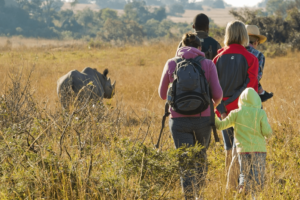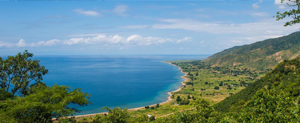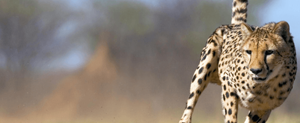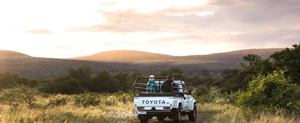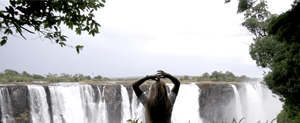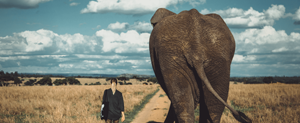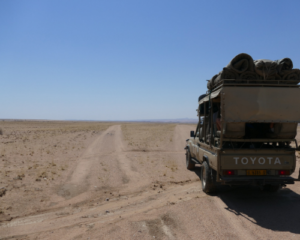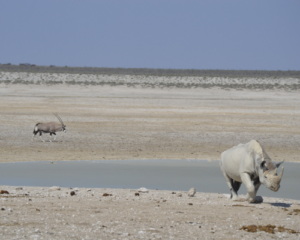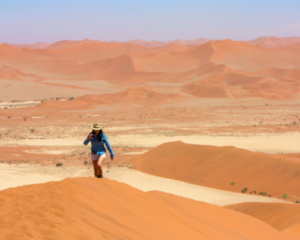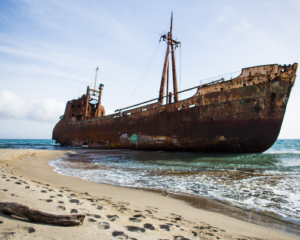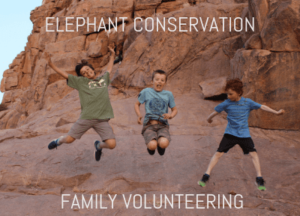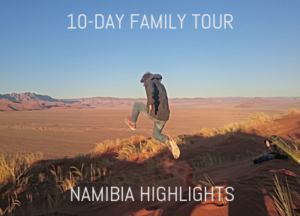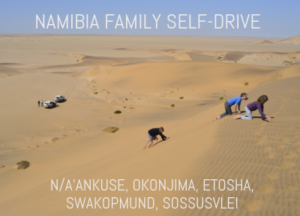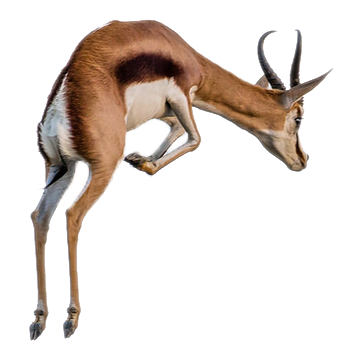A family trip to Africa is not always the most obvious choice, but having lived and travelled extensively in Africa for many years, now that I have a child, I can’t think of anywhere more exciting for families to experience. And for a once-in-a-lifetime family vacation, Namibia is definitely a destination to be reckoned with.
Here at CTA, we believe that Namibia is one of the easiest introductions to Africa that you could give your family. The country is safe, welcoming, well set up, and has some of the best wildlife viewing, adventure activities and spectacular scenery in Africa.
Volunteer with your family in Namibia today! Here’s why:
1. It’s very underpopulated
With a population of just over 2.6 million, in a country double the size of Germany, Namibia is one of the least densely populated countries in the world. And with nearly 15% of the population living in Windhoek, once you get out of the capital you can go miles without seeing another person.
While this might not suit everyone, we think this is one of Namibia’s greatest attractions.
2. Its very safe
Namibia is one of the safest countries in Africa. Thanks to its sparse population, even Windhoek is more like a provincial town than a large capital city. With a little common sense, tourists rarely find themselves in dangerous or scary situations. If you exercise the same precautions that you would in any unfamiliar country, you are unlikely to be affected by crime – keep your valuables out of sight, keep your doors locked when driving and put your valuables in a safe wherever you can. Don’t travel at night (mainly because of the gravel roads and wild animals), and lock up your tent if you can.
3. Incredible wildlife and unique landscapes
Namibia has some of the best year-round game viewing opportunities in Africa; the star of the show obviously being Etosha National Park. It is well worth spending 3 nights in the park to make sure you can fully explore each region, home to different animals and birds.
In addition to Africa’s Big 5, Namibia is also home to the world’s largest cheetah population, and the country is renowned for its excellence in carnivore conservation. We definitely recommend a visit to the Cheetah Conservation Fund outside of Otjiwarongo, where you and your family can learn about the work being done to support cheetahs in the wild.
And it’s not just about the large animals. One of the highlights of a trip for kids has is a guided nature walk into the dunes around Swakopmund, where your guide will show you the small animals which call the desert their home. These include chameleons, tiny snakes and blindworms, geckos and lizards, and you will also learn about the special plants that have adapted to life in such a harsh environment.
The dunes of Sossusvlei and the hikes around Sesriem Canyon are unforgettable, and if you have slightly older (or taller!) children, then we can’t recommend taking a balloon ride enough (kids need to be more than 120cm to ride). It is a magical early morning experience (despite the 4.30am wake up in the middle of winter).
Jumping off rocks, climbing up sand dunes and exploring unfamiliar environments are everything that kids of all ages love.
4. Easy to get around
Despite the lack of public transport options available in Namibia, car hire is extremely affordable. If you don’t fancy driving, there are plenty of tours you can join (ask for our recommendations).
The roads in Namibia are amazing. And what makes them even more amazing is the complete lack of traffic, excellent road signs and regular distance markers. Be aware that many of Namibia’s roads, off the main highways, are gravel, so you cannot travel fast (the speed limit is 80km/h on gravel roads), and you need to watch out for windscreen cracks and punctures. That being said, the country is perfect for self-drives and easy to navigate. Drivers in Namibia drive on the left.
Depending on where you want to travel, you may not need to use a 4×4 vehicle. Of course, if you plan on camping, a 4×4 is really the ONLY way to travel, but otherwise, you can consider saving some money and hiring a sedan car. This will get you to and around Etosha, to Swakopmund and to most of Sossusvlei, and as long as you are careful on the gravel roads, you will be fine.
Car seats are available for hire, although not compulsory by law. We also found that a booster seat is useful for older children, so they can see out the window better when you’re game viewing.
Fuel is readily available in Namibia, with petrol stations in all the main towns (and even in some very random places!). Most fuel stations also have a shop where you can buy water and snacks if you run short.
5. Malaria (or lack of)
There is no malaria in the vast majority of tourist destinations in Namibia. It is really only prevalent as you head up into the north-west river region. There is also no yellow fever in the country.
6. Huge variety of things to do
The variety of activities on offer in Namibia is huge, with something to suit even the most demanding teenager. In and around Windhoek there are a number of wildlife sanctuaries including N/a’ankuse and Okonjima, both of which we highly recommend. In Swakopmund, you can go quad biking into the dunes, sand-boarding, fishing (both on land and in a boat), there are micro-lights and light aircraft tours up the Skeleton Coast, and dolphin cruises from Walvis Bay. In Damaraland you can go on a drive to search for the elusive desert-adapted elephant, visit the cultural village and marvel at the collection of more than 2,000 ancient Bushmen rock carvings.
7. Range of accommodation
There is a wide range of accommodation options and the vast majority of places will happily cater to children of all ages. Most lodges and B&Bs will be able to give you a family room or two adjoining rooms.
There are many excellent mid-range options, and if you do want to splash out, there are a number of incredible lodges which will accept younger children. The best thing about accommodation in Namibia, is that you are really getting what you pay for – most lodges are set in outstanding areas of natural beauty, and have been designed to integrate into the environment as much as possible.
If you’re a bit more of an adventurous family, we highly recommend exploring Namibia using a 4×4 vehicle with two rooftop tents. Many car hire firms will offer a camping option, where the car comes fully equipped with tents, sleeping bags, travel pillows (hot tip – buy cheap pillows when you arrive in Windhoek!), cooking equipment and a fridge / freezer. Namibian campsites are excellent, with the vast majority having power points, flush toilets, showers and hot and cold running water.
Camping is an incredible way to see the country, and each day you simply pack up your kit and head off like a tortoise, with your home on the roof.
8. Namibia can be done cheaply and independently
The Namibian dollar is pegged to the South African Rand, and either can be used interchangeably throughout the country. The current exchange rate and the weak Rand, means that the cost of travelling around Namibia has become very affordable. Fuel, food and accommodation can be obtained cheaply, and the prices of most accommodation compares very favourably with other holiday destinations. Entrance fees and activities are extremely reasonably priced.
9. School holidays are great timing..
If you can book far enough in advance, June, July and August are the most incredible times to visit Namibia. There is no rain around, the days are warm without being sweltering and animals congregate around waterholes, which means game viewing is at its best.
10. ..But Namibia is amazing all the time!
Namibia is a year-round destination with more than 300 sunny days a year.
December – March is low season, where rates are cheaper and most of the parks are quiet. Temperatures can get hot, and the days can be humid with the occasional isolated afternoon thunderstorm. January and February are great game viewing months, despite the rains, and predators tend to be very active during these months, giving you great sightings.
April and May have the best weather , with temperatures more moderate and little to no rainfall. Towards the end of May, animals seek out water sources and game viewing is amazing. Peak season usually starts on 1st April. June to August are the busiest months, where game viewing is at its best and the parks are busiest. The days are bright, warm and clear but nights can drop below freezing. As Namibia is so vast, it never feels overcrowded. September and October are great times to visit – the days and evenings are warmer, game viewing is excellent and there is no rain.
Hopefully, we have given you the inspiration for you to volunteer with your family in Namibia! We have a number of tours, volunteer programmes and travel experiences which we can guarantee you will all love – get in touch to find out more!
– – – – – – – – – – – – – – – – – – – – – – – – – –

